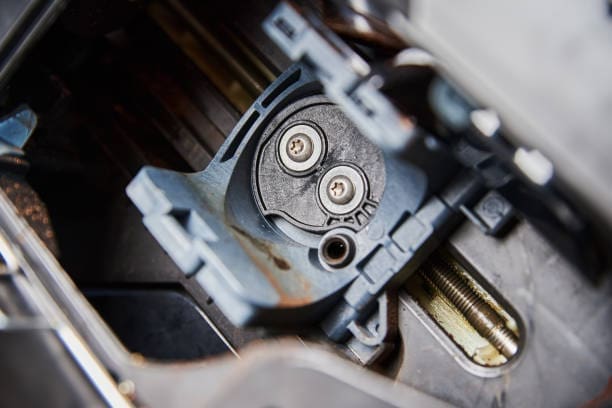A Beginner’s Guide to Improving Your Car’s Performance without extensive modifications, a Stage 1 remap might be the perfect solution. This beginner’s guide explores what a Stage 1 remap entails, how it works, and what you should know before making the upgrade. By understanding the basics, you can make an informed decision and enjoy improved performance from your car.
What is a Stage 1 Remap?
Table of Contents
Toggle
A Stage 1 remap is a performance tuning modification aimed at optimizing your vehicle’s engine performance through software adjustments. Unlike more intensive stages of remapping, Stage 1 is designed to enhance your car’s power and efficiency while keeping the engine’s hardware in its standard, unaltered state.
Key Features of a Stage 1 Remap:
- Software Optimization: Adjusts engine parameters such as fuel injection, ignition timing, and boost pressure.
- No Hardware Changes Required: Unlike Stage 2 or 3 remaps, Stage 1 does not require any additional hardware upgrades.
- Improved Performance: Generally leads to increased horsepower and torque, along with improved fuel efficiency.
How Does a Stage 1 Remap Work?
The process of a Stage 1 remap involves modifying the engine control unit (ECU) software to enhance performance. Here’s a step-by-step look at how it works:
- Diagnostic Assessment: The process begins with a diagnostic check to ensure that the engine and other critical systems are in good working order.
- ECU Software Update: The existing ECU software is replaced or modified with an optimized version that enhances engine performance parameters.
- Testing and Tuning: After the remap, the vehicle is tested to ensure that the new settings perform well and that the engine operates smoothly.
- Final Adjustments: Any necessary tweaks are made to ensure the vehicle achieves the desired performance improvements while maintaining reliability.
Benefits of a Stage 1 Remap
Opting for a Stage 1 remap offers several benefits, especially if you’re looking for a straightforward way to boost your car’s performance without extensive modifications.
1. Enhanced Performance:
- Increased Power: A Stage 1 remap can boost horsepower and torque, resulting in a more responsive and quicker acceleration.
- Better Throttle Response: Adjustments to the throttle mapping provide a more engaging driving experience.
2. Improved Fuel Efficiency:
- Optimized Fuel Mapping: By optimizing fuel injection and combustion processes, a Stage 1 remap can improve fuel efficiency under certain driving conditions.
3. Cost-Effective Upgrade:
- Affordable Performance Boost: Compared to other performance upgrades that involve hardware changes, a Stage 1 remap is relatively cost-effective.
4. Retained Reliability:
- Engine Longevity: Since no hardware changes are involved, the remap is generally safe for the engine, assuming it’s done by a reputable professional.
What to Consider Before Getting a Stage 1 Remap
Before proceeding with a Stage 1 remap, there are several factors to consider to ensure that you make the right choice for your vehicle and driving needs.
1. Vehicle Compatibility:
- Engine and ECU Compatibility: Ensure that your vehicle’s engine and ECU are compatible with Stage 1 remapping. Not all vehicles may benefit equally from a Stage 1 remap.
- Existing Modifications: If your vehicle already has modifications or is not in standard condition, it’s essential to consult with a specialist to assess compatibility.
2. Quality of the Remap:
- Professional Tuning: Choose a reputable tuner or garage with experience in Stage 1 remapping. A well-executed remap can enhance performance without causing reliability issues.
- Software Quality: Ensure that the tuning software used is of high quality and appropriate for your vehicle’s make and model.
3. Impact on Warranty and Insurance:
- Warranty Implications: Check how a Stage 1 remap might affect your vehicle’s warranty. Some manufacturers’ warranties may be voided by performance modifications.
- Insurance Considerations: Inform your insurance provider about the remap, as it may affect your coverage or premiums.
4. Fuel Quality:
- Recommended Fuel: A Stage 1 remap may require higher-quality fuel to achieve optimal performance. Ensure that you use the recommended fuel type for your vehicle.
Choosing the Right Garage for a Stage 1 Remap
Selecting a reputable garage or tuning specialist is crucial for a successful Stage 1 remap. Here are some tips for making the right choice:
1. Research and Reviews:
- Check Reviews: Look for customer reviews and testimonials to gauge the garage’s reputation and quality of service.
- Seek Recommendations: Ask for recommendations from friends, family, or online automotive communities.
2. Qualifications and Experience:
- Certified Technicians: Ensure that the technicians performing the remap are certified and experienced in ECU tuning.
- Track Record: A garage with a proven track record in Stage 1 remapping is more likely to deliver satisfactory results.
3. Warranty and Support:
- Service Warranty: Inquire about any warranties or guarantees provided with the remap service.
- Post-Remap Support: Ensure that the garage offers support and assistance if any issues arise after the remap.
Common Misconceptions About Stage 1 Remaps
Several misconceptions about Stage 1 remaps can lead to misunderstandings. Here are a few common myths debunked:
1. “Stage 1 Remaps are Dangerous for Your Engine”
- Reality: When performed correctly by a skilled professional, Stage 1 remaps are generally safe and should not damage the engine. The software adjustments are designed to work within the engine’s existing limits.
2. “A Stage 1 Remap Will Void Your Warranty”
- Reality: While some manufacturers’ warranties may be affected, many remaps are performed without voiding the warranty. It’s essential to verify the specifics with your manufacturer and dealer.
3. “Stage 1 Remaps are Only for Performance Cars”
- Reality: Stage 1 remaps can benefit a wide range of vehicles, not just high-performance models. They can provide improved performance and efficiency for everyday cars as well.
What to Expect After a Stage 1 Remap

Once you’ve had your Stage 1 remap completed, here’s what you can expect:
1. Noticeable Performance Improvements:
- Enhanced Power and Torque: You’ll likely experience a boost in power and torque, leading to improved acceleration and overall driving dynamics.
- Better Fuel Efficiency: Depending on your driving habits, you may notice an improvement in fuel economy.
2. Engine Behavior:
- Smooth Operation: The engine should operate smoothly with the new settings, but it’s essential to monitor for any unusual behavior or issues.
- Responsive Throttle: The throttle response should be more immediate, providing a more engaging driving experience.
3. Maintenance and Monitoring:
- Regular Maintenance: Continue with regular maintenance to ensure that the engine remains in good condition and performs optimally with the remap.
- Monitoring: Keep an eye on performance and fuel consumption to ensure that the remap delivers the desired benefits.
Conclusion
A Stage 1 remap is an excellent option for those looking to improve their car’s performance without significant modifications. By optimizing the engine’s ECU software, a Stage 1 remap can enhance power, torque, and fuel efficiency while keeping the vehicle’s hardware unchanged. Before proceeding, it’s important to consider factors such as vehicle compatibility, the quality of the remap, and the potential impact on warranty and insurance. Choosing a reputable garage and understanding what to expect can help you enjoy the benefits of Stage 1 remap and make the most of your vehicle’s performance.



